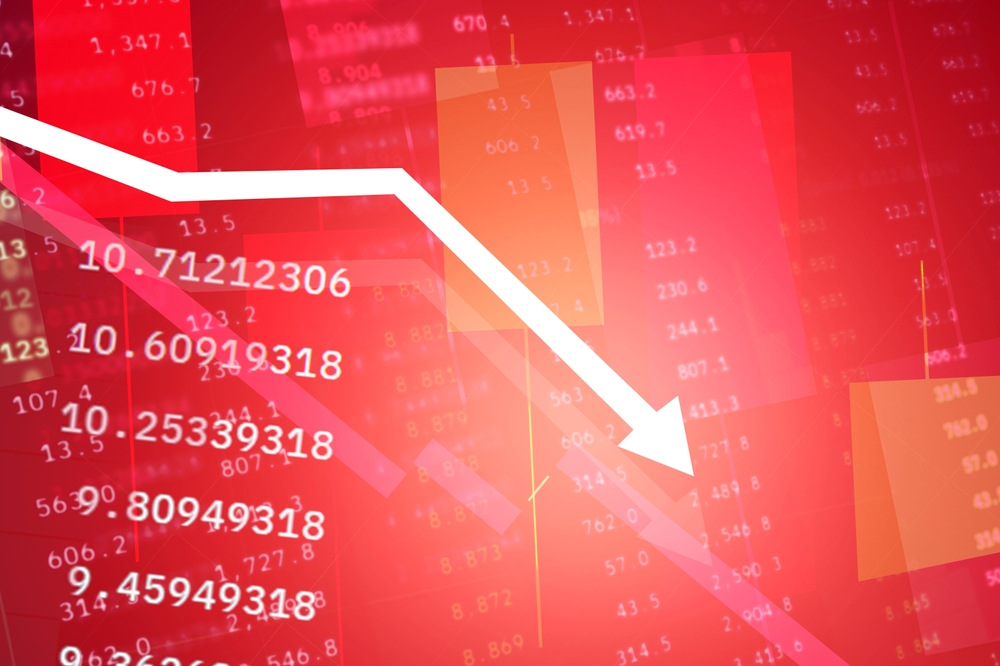U.S. stocks dropped sharply on Monday, continuing a volatile stretch for Wall Street. Geopolitical tensions, earnings anxiety, and Federal Reserve uncertainty collided to trigger widespread market losses. The tech-heavy Nasdaq led the way, down 2.5%, followed by the S&P 500, which fell 2.1%, and the Dow Jones Industrial Average, which lost 783 points, or 2%. The VIX, a key measure of market fear, surged more than 12%, while gold surged to a record $3,431 per ounce as investors flocked to safe-haven assets.
Market Pressures and Geopolitical Tensions
Nvidia stock dropped more than 5% after new White House export restrictions on its AI chips. These restrictions have raised concerns that Chinese rivals, such as Huawei, may gain an edge in the market. Huawei is reportedly planning to ship its own advanced AI chips to local customers as soon as next month, further escalating tensions. Tesla (TSLA) stock fell almost 7% ahead of its earnings report on Tuesday, with investors bracing for lackluster results and searching for signs of stabilization in demand and margins.
The Impact of Trump’s Criticism of the Fed
Meanwhile, the U.S. dollar tumbled to a three-year low after President Donald Trump criticized Federal Reserve Chair Jerome Powell and called for his termination. This move deepened investor concerns over the central bank’s independence, adding to the broader sense of policy unpredictability that is driving market volatility. Trust and stability are core to functioning markets, and the chaos injected into the financial system has raised the stakes for investors. When institutional credibility is undermined, the costs are felt across the economy, from higher borrowing rates to delayed investment decisions.
Quarterly Earnings and the Outlook for Growth
With more than 100 companies reporting earnings this week—including major players like Tesla, Google parent Alphabet (GOOGL), IBM (IBM), Boeing (BA), and Procter & Gamble (PG)—traders are seeking any signs of resilience or clarity in this chaotic market. The earnings reports will not only reflect growth but also offer insight into stability in a market that’s become more unpredictable by the day. The next few days could set the tone for the rest of the second quarter.
Minimal Guidance as CEOs Play It Safe
“The Street does not care anymore about words and ‘deal progress’ comments,” Wedbush analysts noted. They highlighted the economic damage caused by Trump’s ongoing trade policy fluctuations, warning that the U.S. economy is likely on a recession path. With capital expenditures (capex) halted, hiring plans paused, and inflation concerns rising, the uncertainty in the U.S. is now greater than during the COVID-19 pandemic. “We are heading into a tech earnings season that we expect to see minimal or no guidance,” Wedbush analysts stated, underscoring the unpredictability of corporate spending plans.
Netflix Shines in a Dark Market
One bright spot in an otherwise turbulent market was Netflix (NFLX). The company posted an almost $3-billion profit in the first quarter of 2025, with $10.54 billion in revenue and a remarkable 31.7% operating margin. Wall Street expressed particular approval of Netflix’s ad-supported $7.99 monthly membership, which appears to be more resilient to recession-driven household savings measures. Netflix’s stock rose 1.4% on Monday, a rare positive movement amid the broader market decline.




















